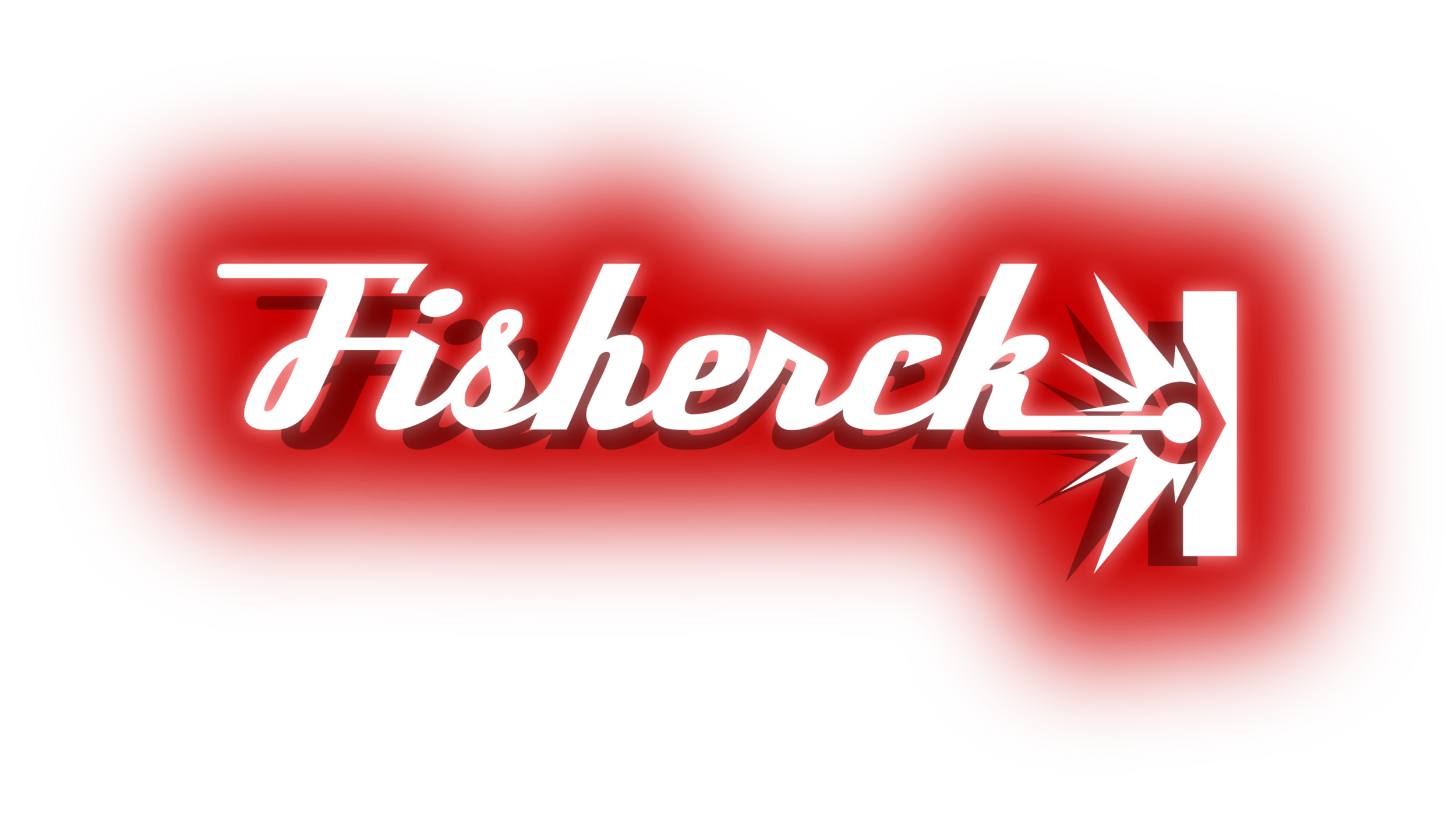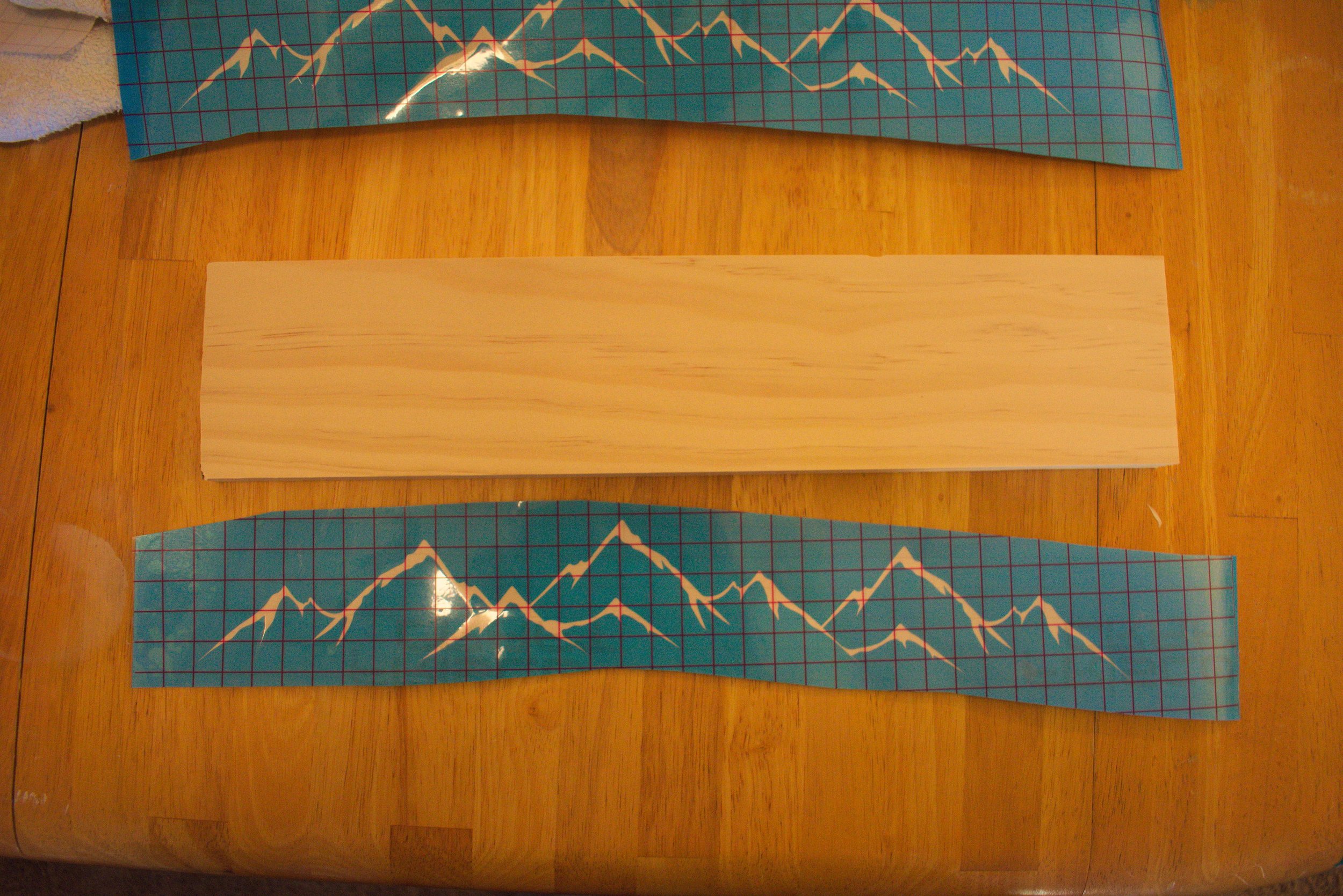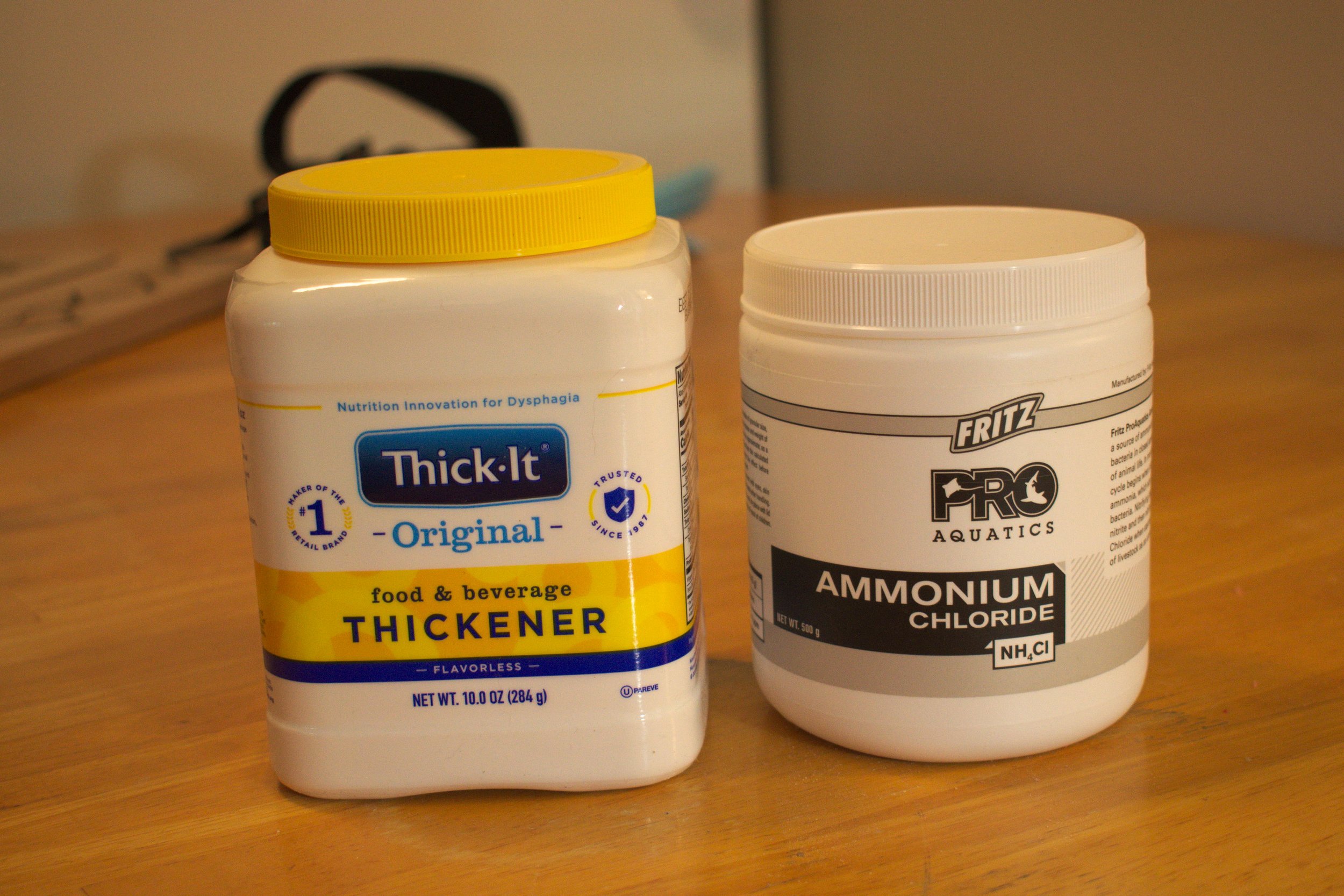Testing Best Woods for Chemical Wood Burning
I recently went about learning how to do wood burning using my Silhouette Cameo, but one major problem that I found with tutorials on this was that they did not tell you what wood worked best! As a result, I decided to make a walkthrough documenting my testing of a handful of reasonably common and cheap woods (picked from Lowes) to see what the results were. Because of this, my tutorial might be a little brief on some parts of the process (beyond the essentials needed to explain how I went about doing it), as this is meant to focus on the results to help you pick what wood to use.
In this tutorial I test the following woods:
Pine
Hemlock
Poplar
Cedar (I used a board for fencing)
Whitewood* (* explained in last step)
Oak
Supplies
Materials:
Wood
Thickener (recommend Thick-It)
Sandpaper (220 grit)
Brush
Tools:
Silhouette, Cricut or other vinyl cutting machine
Heat Gun
Scissors
Step 1: Create the Stencil
I created the stencil using the following method:
I used my Silhouette Cameo to cut out a stencil from aptly named stencil film
Weeded out the design on the stencil
And applied transfer tape over the top of the design
Step 2: Making the Ammonium Chloride Paste
To make the brushable paste, I used a ratio of 8 teaspoons Thick-It + 1 tablespoon ammonium chloride + 1/2 cup water pulled from this tutorial (unless you are doing a really large project, you can shrink the ratio quite a bit, as a little goes a long ways).
As a side note, I tried both corn and potato starch as a thickener, but it was very hard getting the starch alone to form a paste; it took heat to get it to thicken, and it transitioned very quickly from liquid to more of a "gelatin" like substance, instead of paste. Because of this, it applies thicker than when using Thick-It as the thickener, and I noticed that thicker applications run the risk of "pulling" off the wood when heated with the heat gun (and because of that, areas won't get burned). Thick-It, which is a mixture of corn starch and maltodextrin, makes a much better paste that can be applied thinly.
As another aside, though I wasn't able to find it properly explained in the tutorials that I found, I believe that we want a paste that is a compromise of two things:
Thick enough to minimize absorption into the wood, and bleeding under the stencil
Thin enough to be applied thinly, so that the paste doesn't lift up when burnt
Step 3: Applying the Stencil and Ammonium Chloride
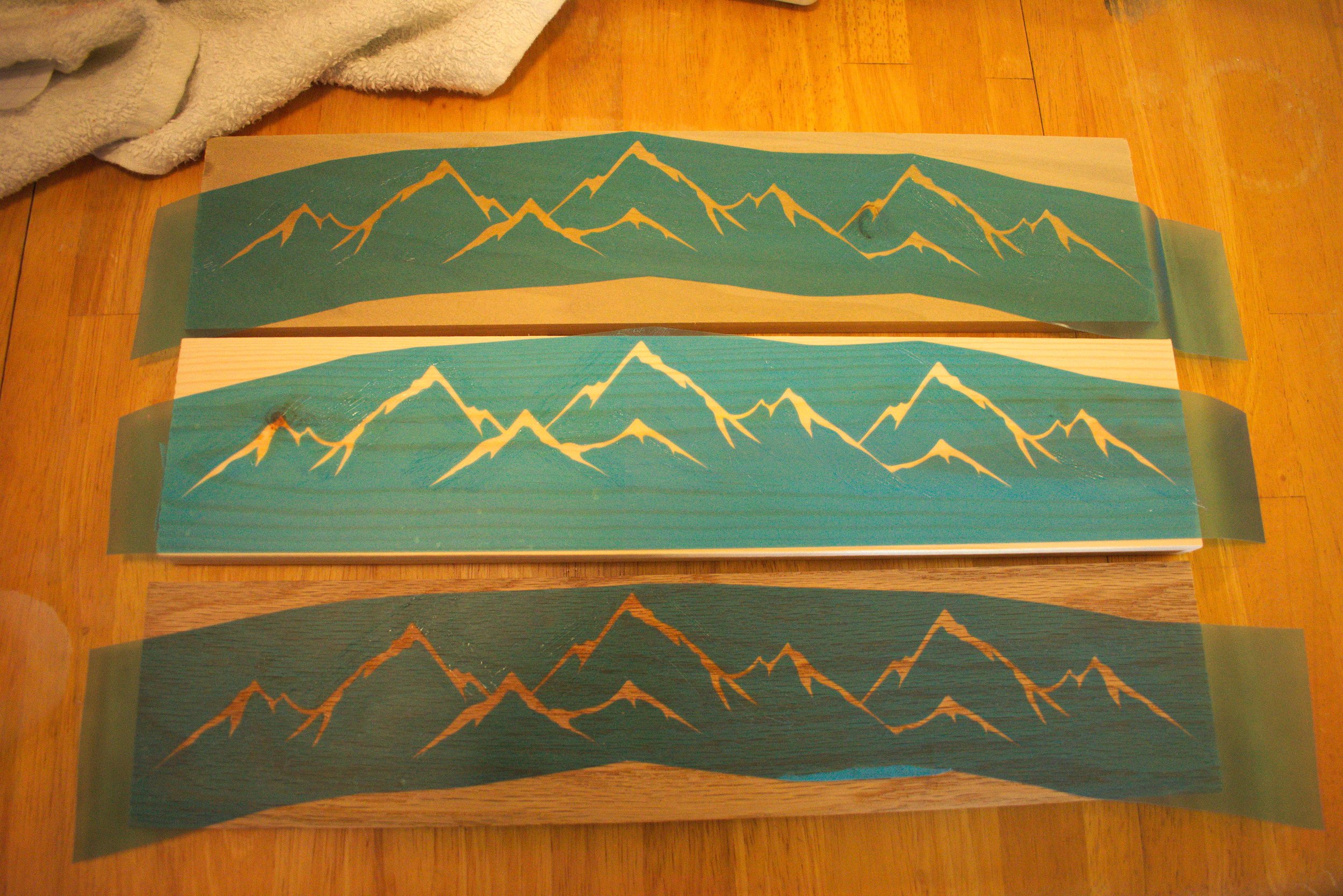
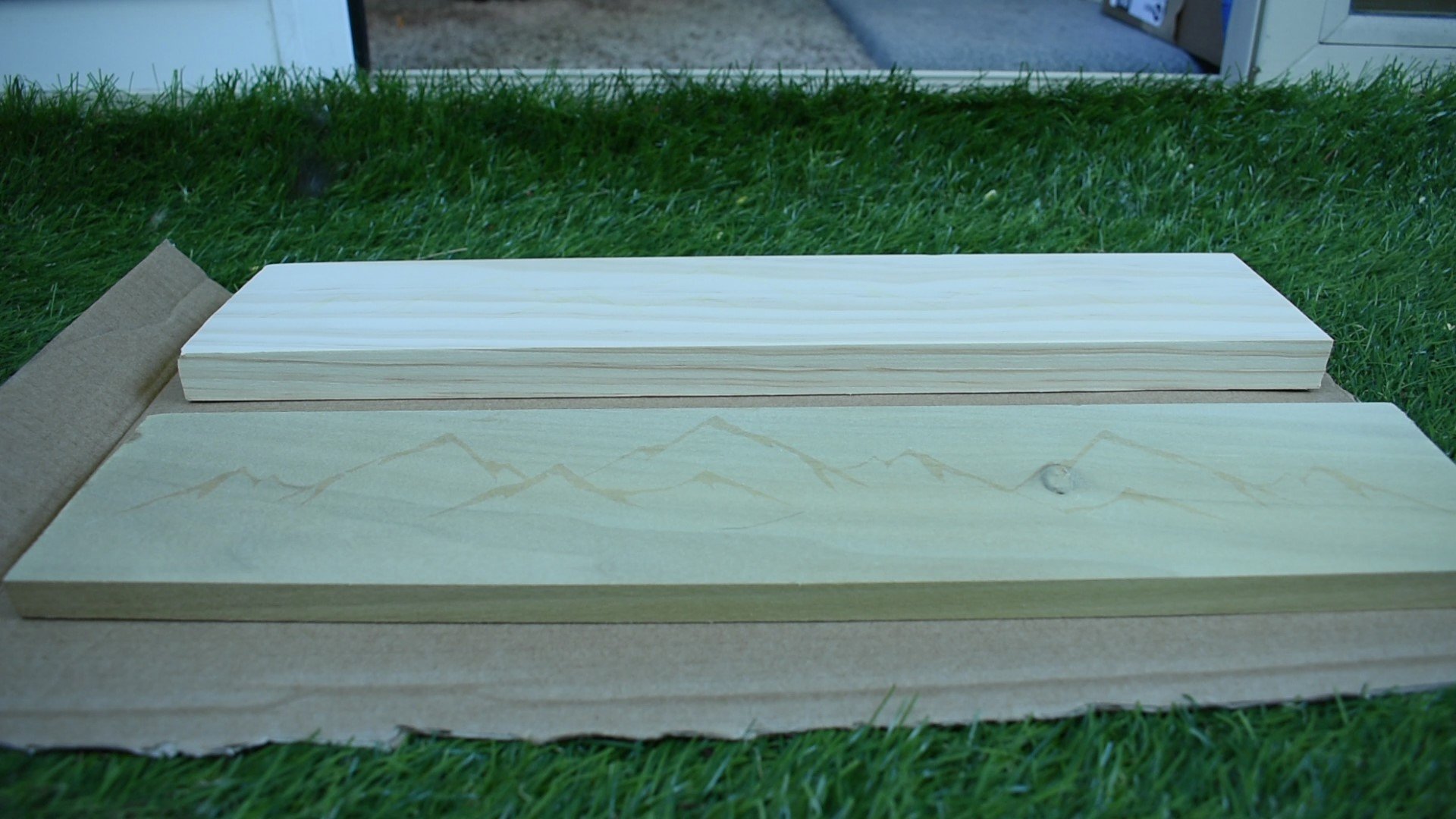
Wood preparation:
To make sure that the vinyl is being applied on as smooth a surface as possible, I sanded all the wood I used with 220 grit sandpaper, then wiped the dust off with a damp cloth.
Application of ammonium chloride solution:
I used the transfer tape to apply the cut stencil, carefully rubbed down the stencil to make sure that everything contacted, then brushed on the paste as thin as I could while ensuring that all surfaces I want burned were coated.
Step 4: Wood Burning
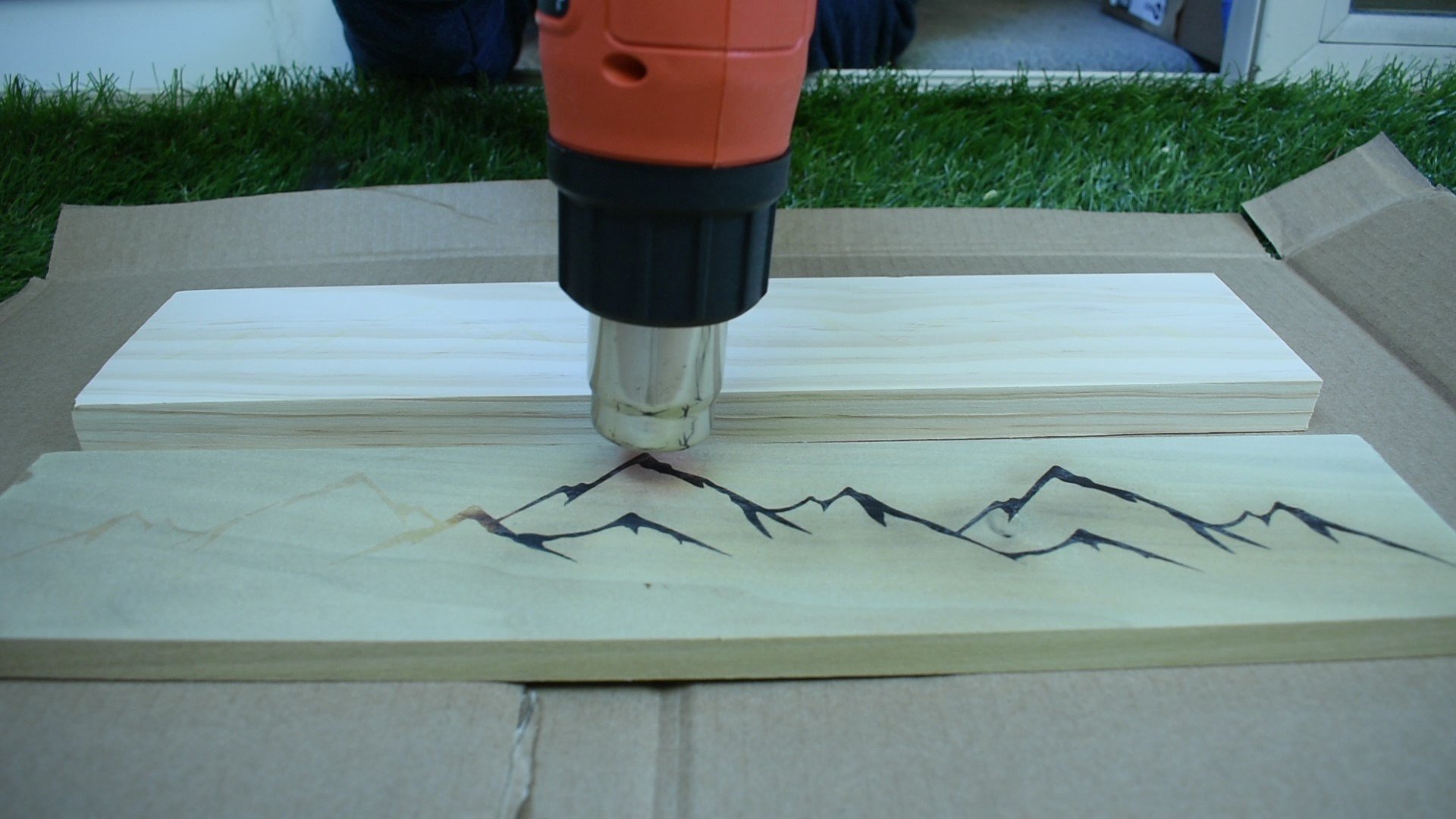
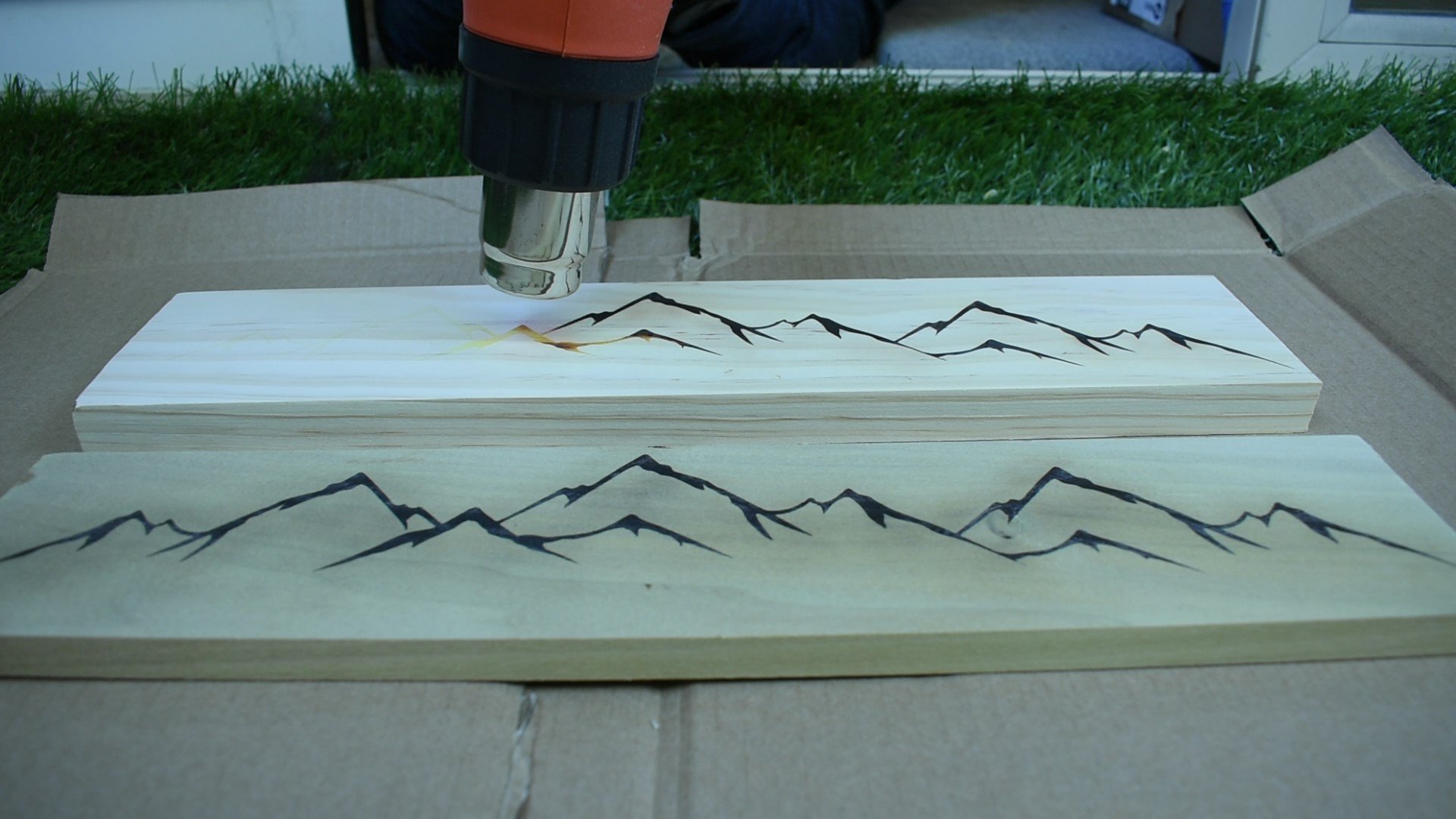
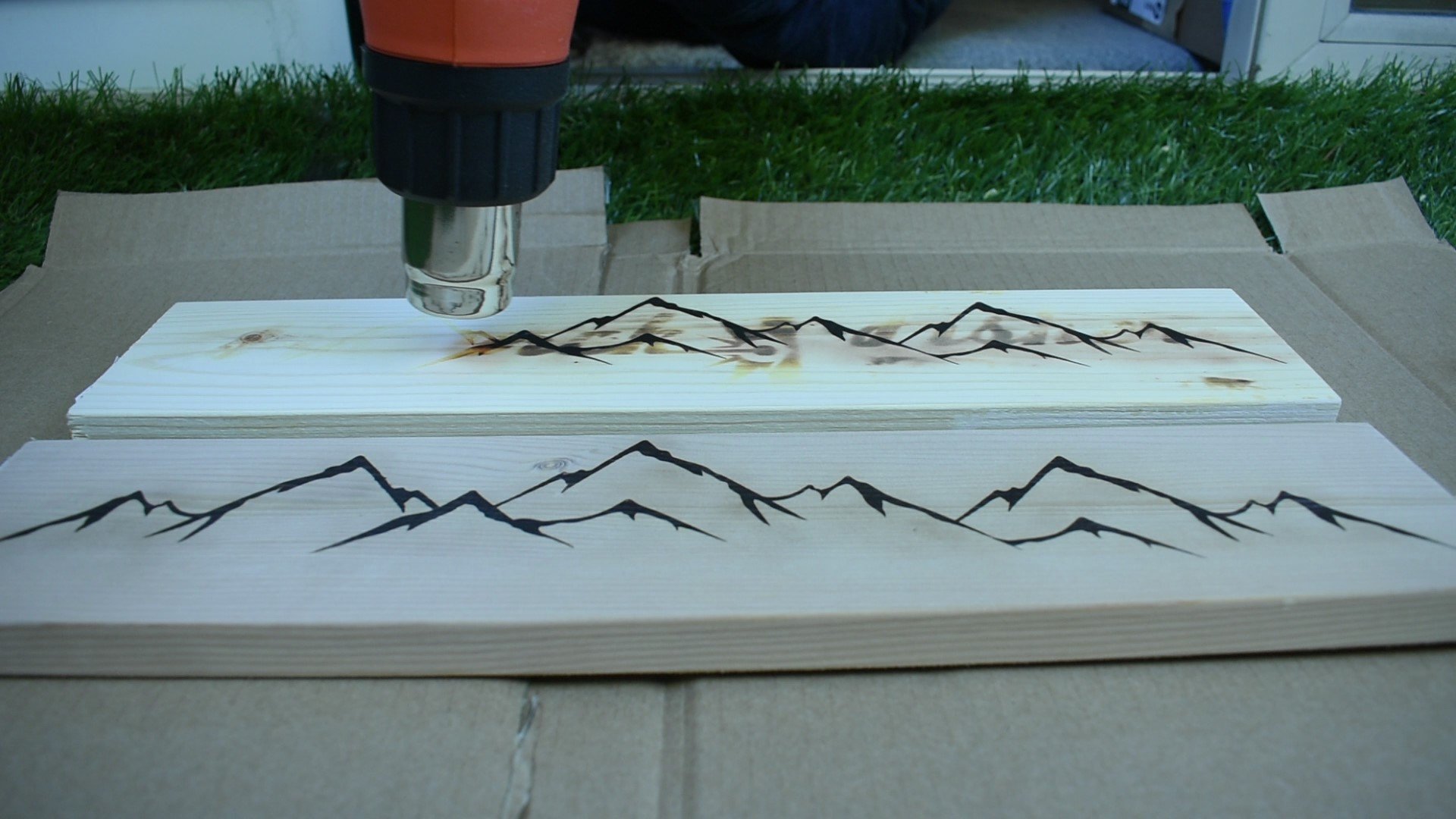
After letting the paste dry, I removed the stencil, and used a heat gun to burn the areas covered with the paste. Be careful holding the heat gun in one place for too long, or you will burn areas of the wood without the ammonium chloride solution. Some woods or more easily burned than others, which I explain in more detail below.
One interesting note: The whitewood piece that I used for the mountain range was a piece that I had previously tested on and then sanded down to remove the burned areas to reuse. You can see that after I had used the heat gun to burn the new mountain range, some parts of the previously tested areas had "ghosting", and burned again. Presumably this is because the ammonium chloride solution was absorbed into the wood, and even after sanding off the burned area, some of the solution remained. Just a note for your own projects. It may be difficult to redo areas that have already had the solution applied (or at least gauge how much material needs to be sanded off to completely remove the previous burned in pattern).
Step 5: Results and Recommendations
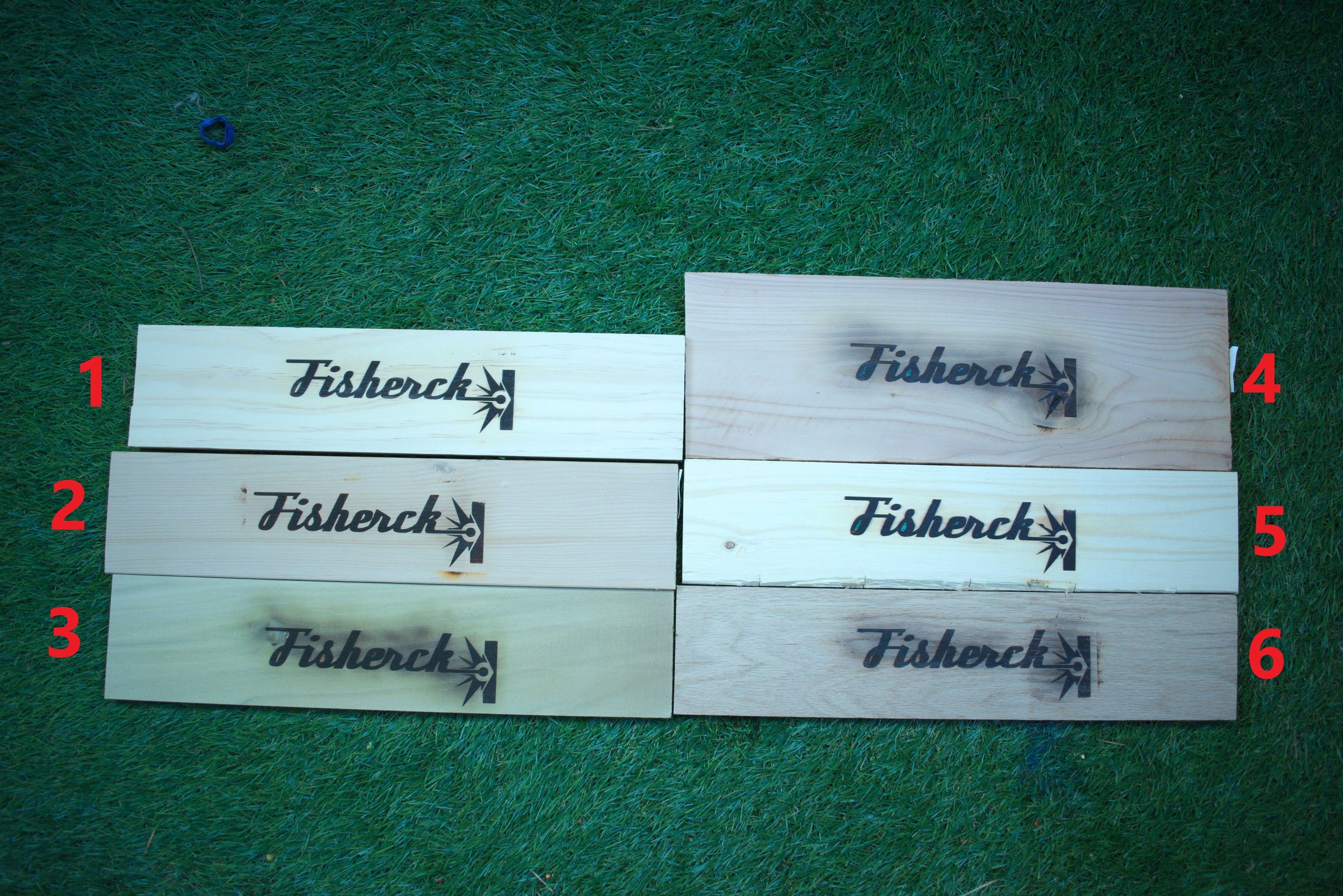
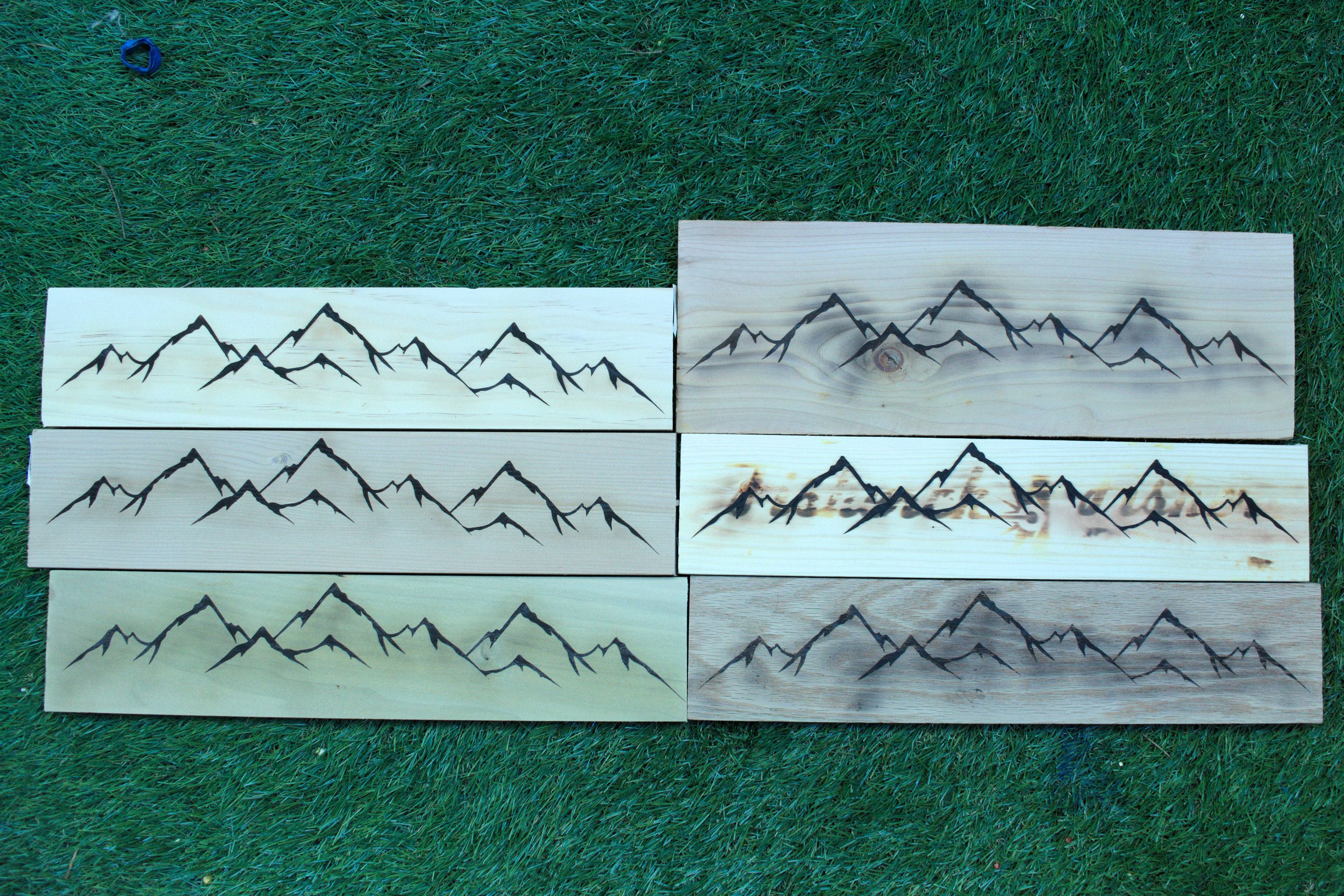
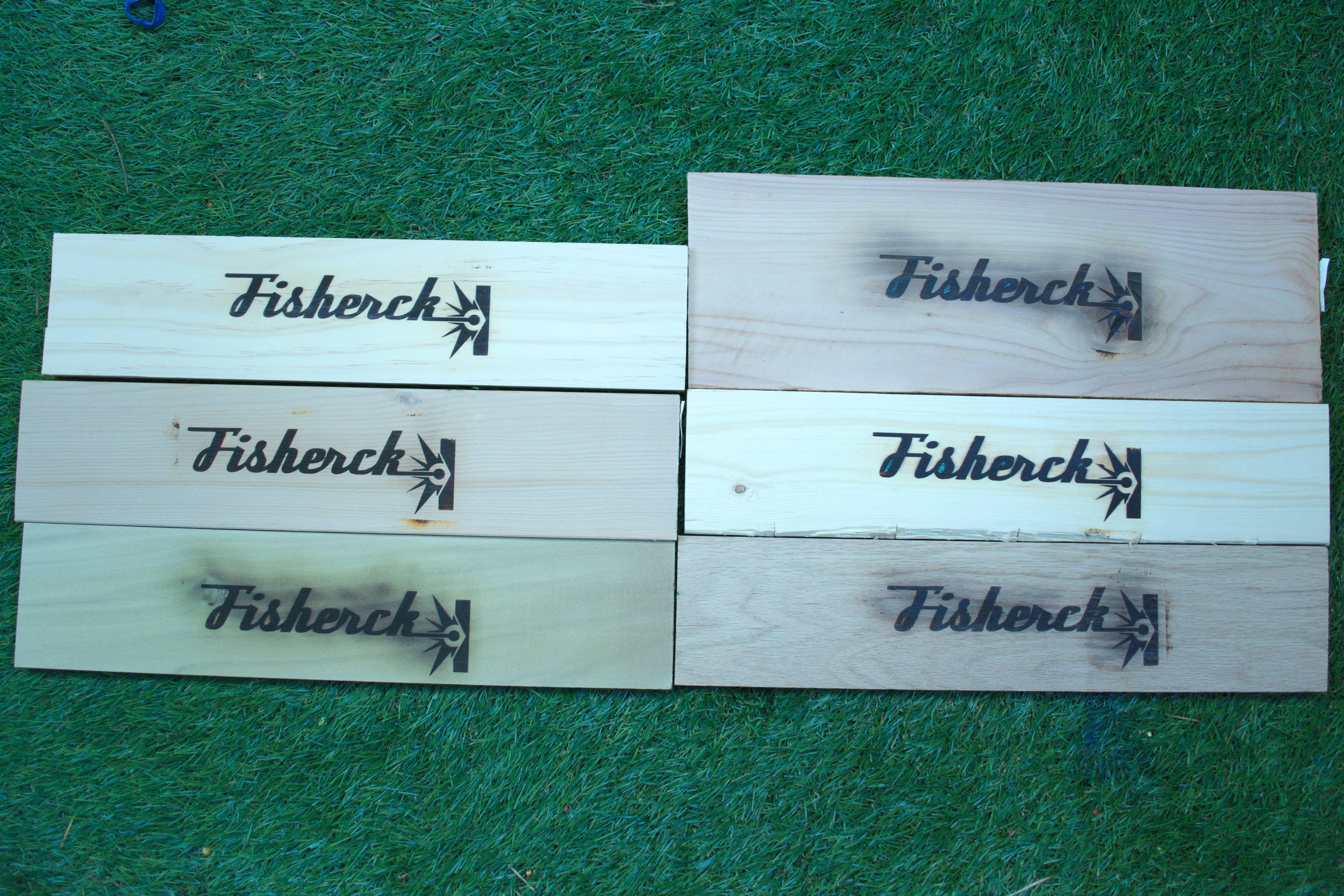
In my test I did two stencils; one is text, and the other a mountain range.
The woods tested (numbered in 1st picture above):
Pine
Hemlock
Poplar
Cedar
Whitewood*
Oak
*I am not a wood expert, but my understanding is that white wood is a generic term for cheap wood, and the "whitewood" I have available at my store may be different than what you get (aka different wood may get different results). From a quick search, spruce, fir, and pine are the most common "white wood" varieties due to how quickly they grow.
As a quick summary, I would rank the results as the following:
Great for wood burning:
Pine (sharp burn lines, very hard to burn areas you don't want burned, high contrast between burned and non-burned areas)
Hemlock (sharp burn lines, relatively hard to burn areas you don't want burned)
Whitewood (sharp burn lines, relatively hard to burn areas you don't want burned, and $cheap$)
Okay for wood burning:
Poplar (sharp burn lines, but easy to burn areas you don't want to)
Cedar (does not burn as dark as other woods, is relatively easy to burn in areas you don't want to, is a bit blurrier than most of the other woods tested.
Not so great for wood burning:
Oak (porous wood makes it easy for bleeding of stencil causing blurry lines, does not burn easily and because of that is easy to burn in areas you don't want to)
A more detailed explanation of each wood:
Pine: A very white wood, so you get great contrast between the wood an areas burned. It is naturally smooth, so it is easy to apply the stencil with minimal risk of bleeding of the paste into areas you don't want it. Pine also appeared to be the hardest wood to burn in areas without the ammonium chloride solution/paste, meaning that there is minimal risk of burning areas that you don't want to burn
Hemlock: Not quite as white as the pine, but still gives sharp lines and good contrast with the burned areas. You need to be a bit more careful about burning areas you don't want to, but it still does a pretty good job. I didn't thoroughly test this, but I believe that hemlock will stain better than pine (if you want to do that in a project).
Whitewood: Very similar results to the pine (and that might even be because it's a cheaper grade of the other pine that I tested). Good contrast, sharp lines, and relatively hard to burn areas adjacent to the pattern you are trying to burn. This also has the added benefit of being the cheapest option! It is a slightly "uglier" wood than the other ones I tested, but if you are going for a "rustic" look, this would probably be the best choice.
Poplar: Gives nice sharp lines comparable to the above woods, but is easier to burn in areas you don't want to. But it still can be done. If you look at the attached pictures, my text test has many burned areas, but my mountain range test did not have nearly as much. This is because I did the text first, then the mountain range, so I was much more careful about not pointing the heat gun at one area for too long.
Cedar: Does not burn as dark as the above woods, and it is easier to burn areas you don't want to. I found the wood does not give quite as sharp of lines as the others. Though not as good as other woods tested, it still gave passable results, which is why I gave it an "okay" rating.
Oak: I found this wood rather porous, which resulted in the blurriest lines of all woods tested. Oak was also the most resistant to burning, and not in a good way. By the time I got the areas with ammonium chloride to start burning, the adjacent areas of the wood were starting to burn too. While the results were still legible, there are better options, so I don't recommend using this.
Hope you found this tutorial helpful in picking out which wood to use for your project!
